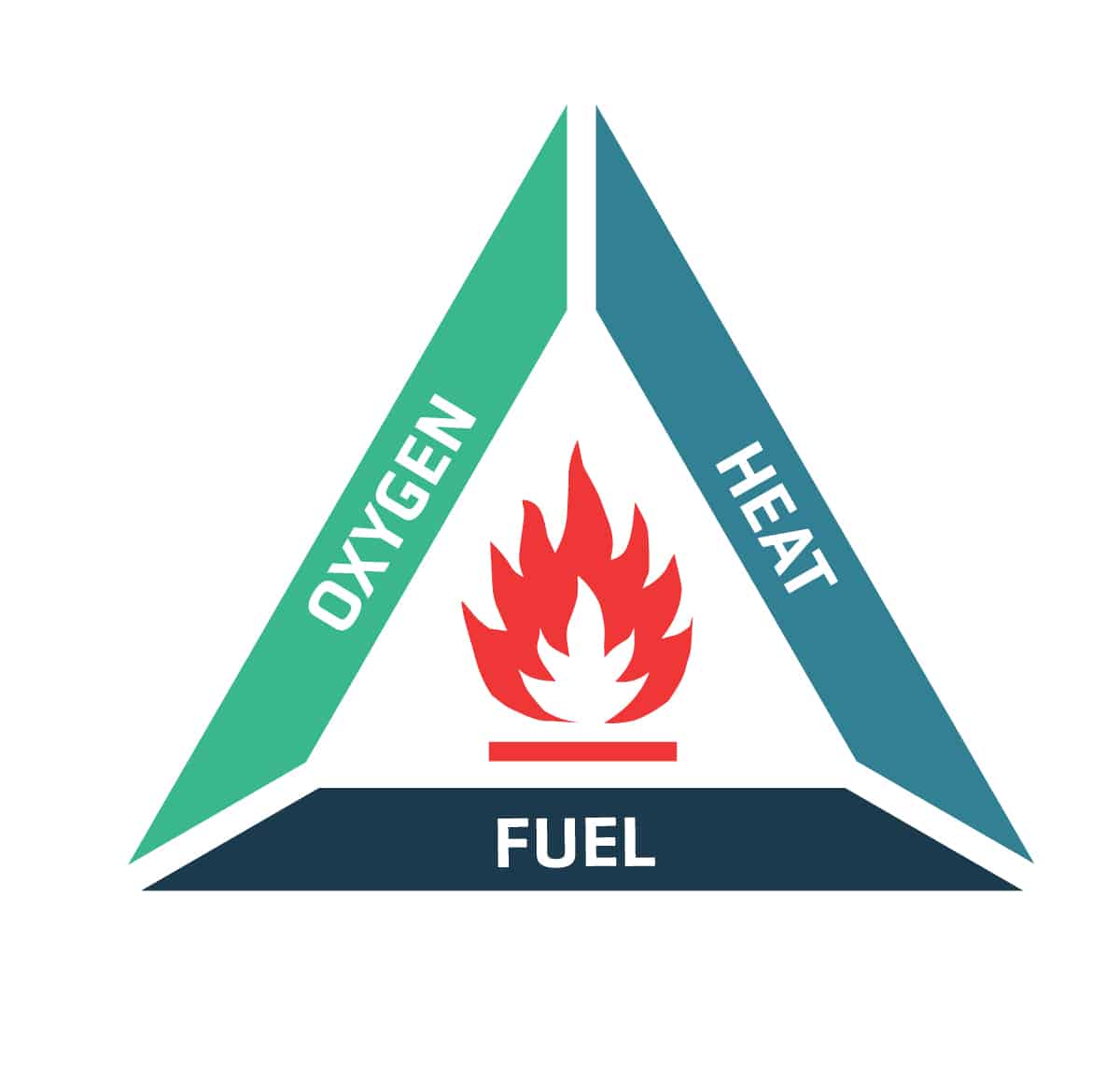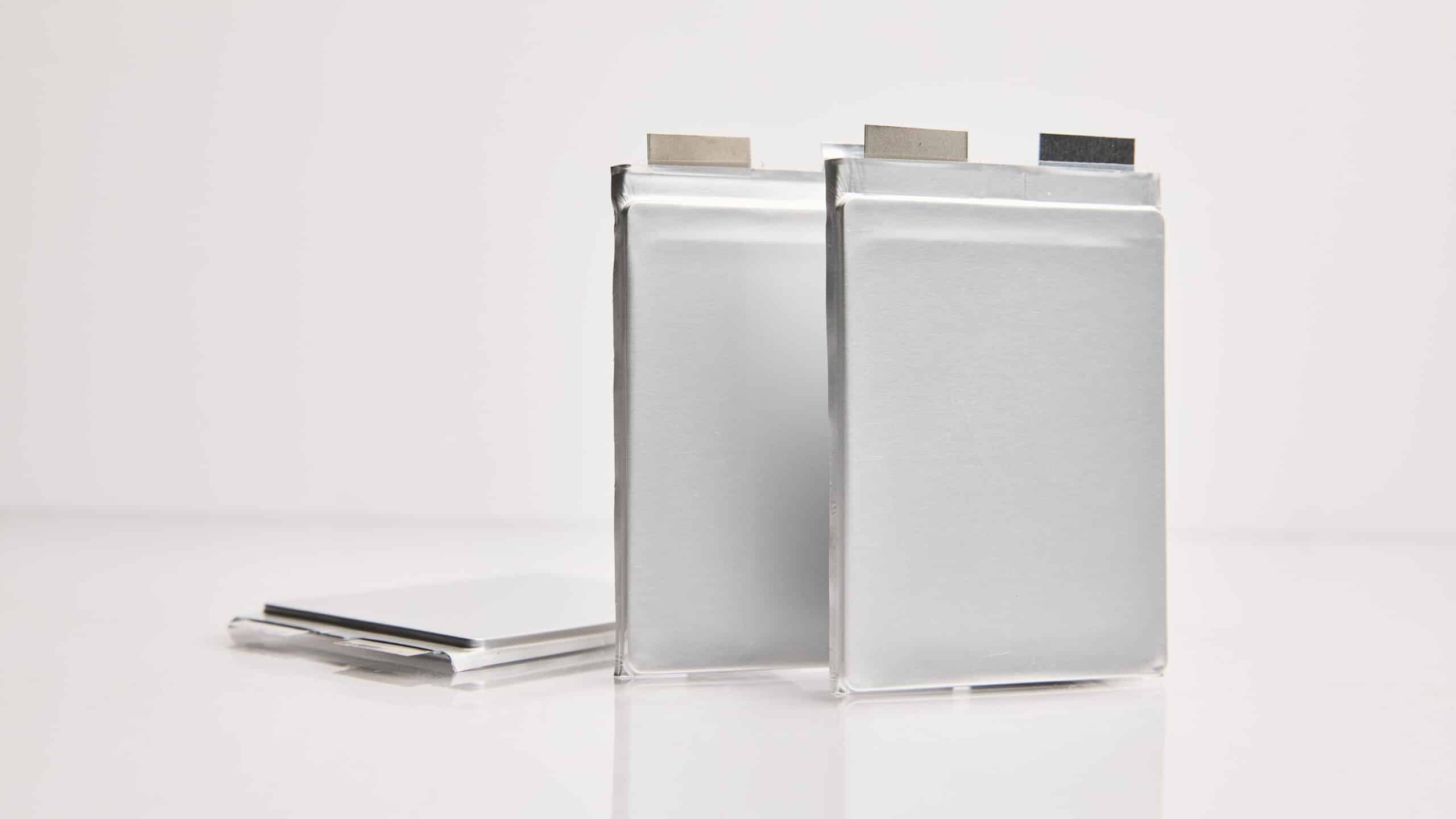What makes conventional lithium-ion batteries dangerous?
 A fire requires three elements: heat, oxygen, and some kind of fuel source. This concept is known as the fire triangle.
A fire requires three elements: heat, oxygen, and some kind of fuel source. This concept is known as the fire triangle.
Imagine a Bic-style lighter. You press down on the sparkwheel with your thumb, creating a spark, a point of high localized heat, through friction between steel and flint. Your thumb lands on the button, which releases an organic hydrocarbon fuel (in this case, butane gas), which is then heated by the flint spark to ignition temperature. Lastly, the surrounding air provides oxygen that allows the initial spark to combust the butane, which in turn releases more heat energy, which will combust more butane, and so on, in self-sustaining reaction. As long as the fire is fed with more fuel and oxygen, it will continue to burn. Let go of the button and you stop the flow of fuel; douse the flame with water, and you deprive it of oxygen, smothering the reaction.
A lithium-ion battery fire is very similar to a Bic lighter, with one important difference. First, a fully charged battery has a strong electrical potential between the anode and cathode. If a battery contains a defect, such as misalignment or metal fragment, it can create a short-circuit within the battery, causing a localized hot spot equivalent to the spark from a lighter. There is also liquid electrolyte inside the battery, typically an organic hydrocarbon that is chemically quite similar to the butane in a lighter, which is potential fuel for a fire.
The key difference between a lithium-ion battery and a lighter? In a high-energy battery, the cathode active material is generally a metal oxide, such as nickel-manganese-cobalt oxide (NMC). This means that batteries contain their own oxygen and do not need to draw oxygen from the surrounding atmosphere to sustain a fire. Thus, when a conventional battery short-circuits, the result is a fire that cannot easily be extinguished, since dousing it with water does not smother the reaction. When the heat from a short-circuit causes the liquid electrolyte to react with the metal oxide cathode, the fire begins to feed on the fuel in the battery: the liquid electrolyte, the polymer separator and even the graphite anode material can all burn. As the reaction becomes fully self-sustaining, the battery enters thermal runaway.
Thermal runaway in a single battery is dangerous enough if it’s in a smartphone on an airplane, but when batteries are packed tightly together in a large pack, the problem is multiplied. Heat from a fire in one battery cell can heat its neighboring cells enough to cause them to enter thermal runaway without the need for an internal short-circuit or spark. This chain reaction from one cell throughout a battery pack is known as thermal propagation.
How can we make safer batteries?
We believe the best way to make batteries with better performance and improved safety is to replace the combustible liquid electrolyte and polymer separator that fuel the fire with a noncombustible solid electrolyte material. In the QuantumScape system, we replace the combustible polymer separator in conventional batteries with our ceramic solid-electrolyte separator. By reducing the potential fuel in the cell, fire risk can be reduced, in the same way that a lighter stops working when the butane is depleted.
However, battery safety is a highly complex problem, and many different factors can interact in unpredictable ways. A battery may be theoretically safer, but this must be demonstrated through extensive testing; no single test can prove a battery is safe. In the next part, Interpreting QuantumScape’s Safety Test Results, we examine how to evaluate battery safety and look at a few examples of different safety tests to see how QuantumScape’s technology stacks up against conventional batteries.


 A fire requires three elements: heat, oxygen, and some kind of fuel source. This concept is known as the fire triangle.
A fire requires three elements: heat, oxygen, and some kind of fuel source. This concept is known as the fire triangle.
